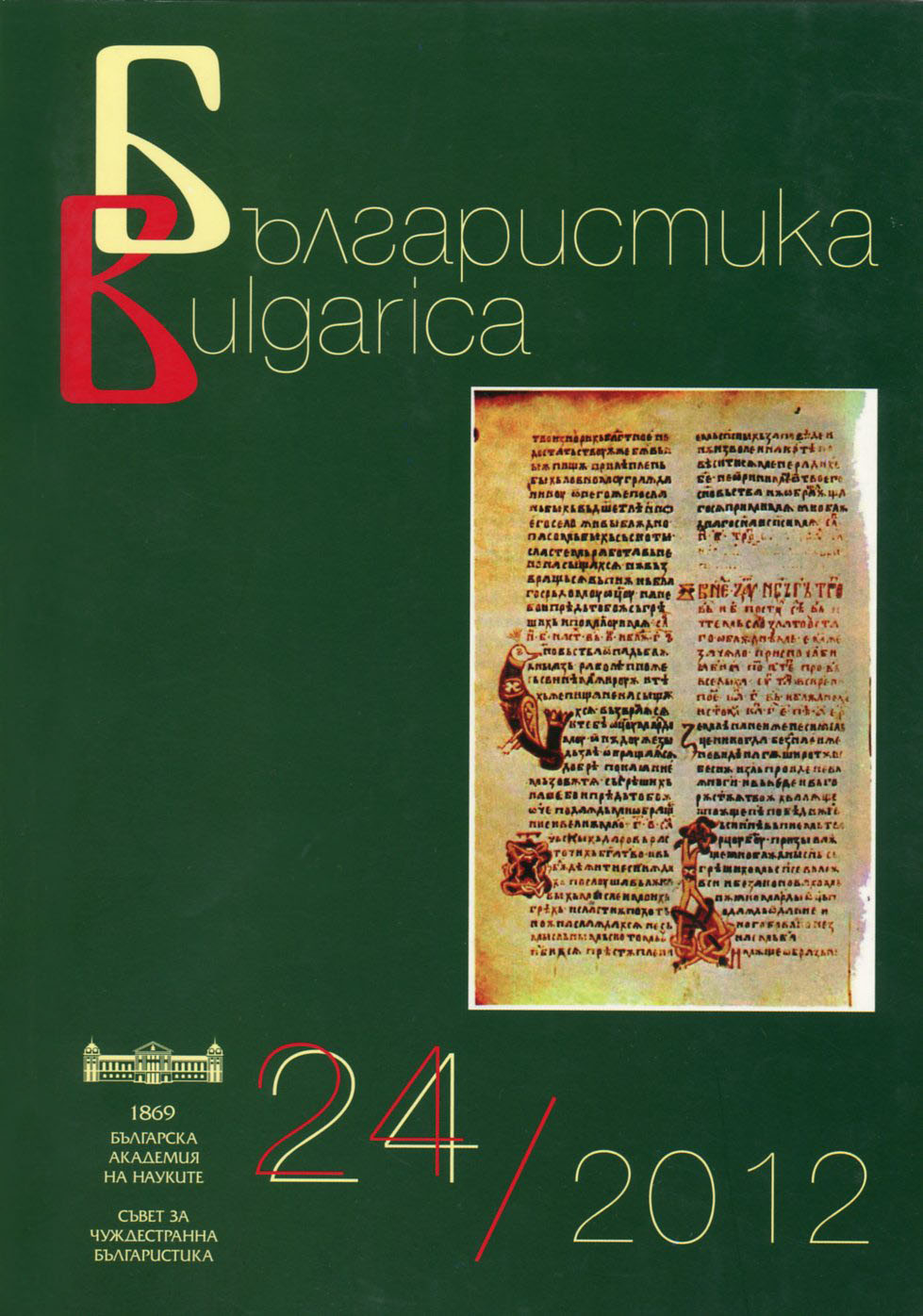
We kindly inform you that, as long as the subject affiliation of our 300.000+ articles is in progress, you might get unsufficient or no results on your third level or second level search. In this case, please broaden your search criteria.

The reception of Heinrich Heine’s literary work in Romanian literature began with the second half of the 19th century and continues until today, taking into account the translation of his creations into Romanian, the critical studies appearing in Romania dedicated to the German author and his influence on the local poets. From the plentiful studies of the bibliography dedicated to Heine, three huge periods of the Romanian literature resulted for the author’s model, respectively: the period starting with the mid half of the 19th century up until the WWI, the interwar period and the post WWII period. Heinrich Heine was taken as a model and his lyrics has been copied and assimilated with enthusiasm in Romanian literature and contributed to the renewal of our poetry in the second half of the nineteenth century. Writers from the society “Junimea” such as Nicolae Schelitti, Dimitrie Petrino, Theodor Şerbănescu, Matilda Cugler-Poni, Samson Bodnărescu and, last but not least, Mihai Eminescu were influenced by the German romantic, creating a cult for him, translating much of his verses and using them as a source of inspiration. The model had later created echoes among the collaborators of the magazine “The Coeval”, like George Kernbach and Avram Steuerman Rodion but also among those at the end of the century, the sower poets like Stefan Octavian Iosif and Maria Cunțan and among the symbolist poets, especially Cincinat Pavelescu and Barbu Nemţeanu. Heine became very popular in our lyrics triggering a movement, a trend in Romanian literature, which would later be called heinism.
More...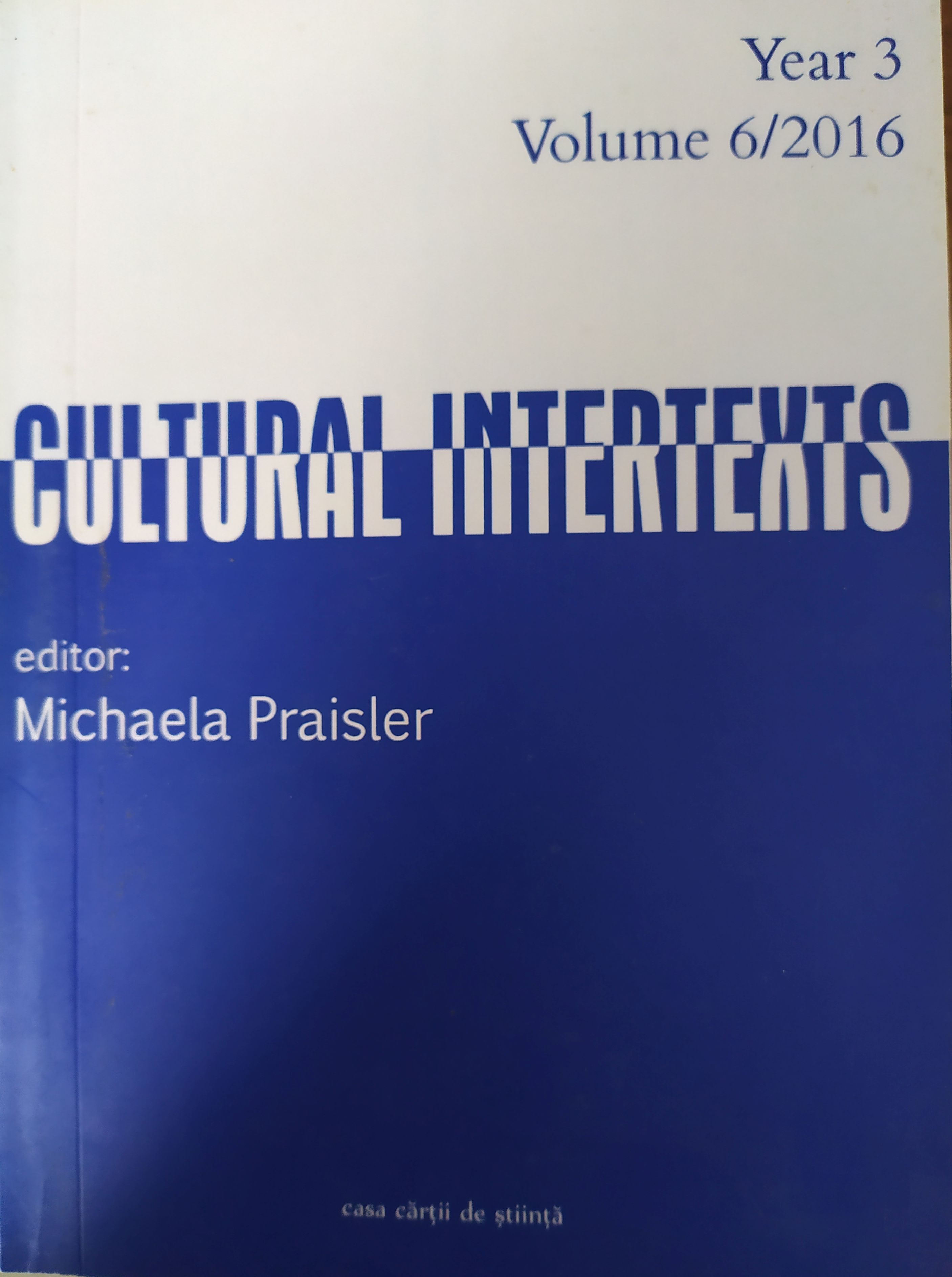
Marketing quality translations in view of advertising local cultures has become increasingly difficult in the context of the omnipresent electronic means of getting the message across. Today, intercultural mediation via translation has added the machine element to the traditional actors involved in the procedure. Machine translation – whether rule based, transfer based, dictionary based, example based, interlingual or statistical – is ideally intended to assist human translators, yet it frequently seems to be the only preferred alternative in accessing texts produced in a foreign language, bypassing the services of a qualified translator, especially for time and money related reasons. Under the circumstances, the tremendous threats that machine translation poses to the quality of the translated text, especially if it is a literary one, need special consideration. Along these lines, the present paper focuses on a case study presupposing the translation of a famous poem by the Romanian nineteenth century poet Mihai Eminescu through Google Translate, comparing and contrasting it with an authorized version by a nineteen-year old translator-genius who died in the 1977 earthquake, published posthumously. It is available in print, as well as on the internet – as written text and as subtitling to poetry reading.
More...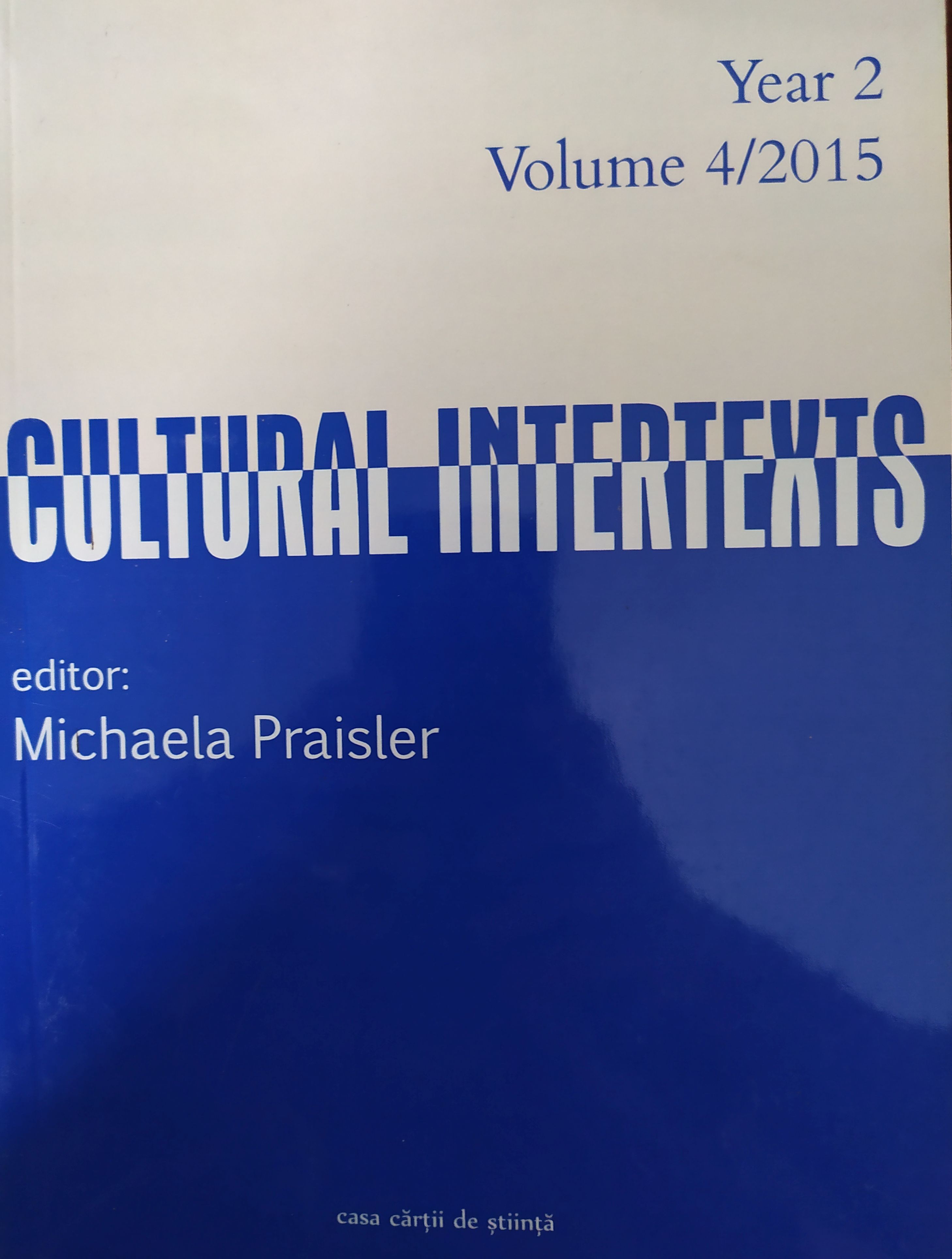
“Retro-modernism” is a concept coined by critic Paul Cernat (Modernismul retro în romanul românesc interbelic [Retro-Modernism in the Romanian Inter-War Novel], Art Publishing, 2009) in view of defining a type of novel developed during the inter-war period as an alternative to prospective modernism, excessively used at that time. The “retro-novels” identified and analysed by Paul Cernat possess a distinct aesthetic physiognomy, marked by nostalgia for the atmosphere at the end of the nineteenth century, despite the modernist techniques employed at the level of the narrative discourse. Little known in the present day cultural space, Ștefana Velisar Teodoreanu (Lily Teodoreanu) tackles the question of the peripheral and provincial environments, suffocated by the lack of perspective in the characters’ destinies, especially in the case of feminine characters. Viața cea de toate zilele [Daily Life] (1940) may be described as retro-modernist, as the writer moderately approaches the theme of the woman’s condition, avoiding the excesses of militant and declarative feminism. The novel’s protagonist overcomes an identity crisis by assuming a superior understanding of the idea of commitment to her family. The reference points of the patriarchal organisation of the world are imperceptibly shaken by the heroine’s drama.
More...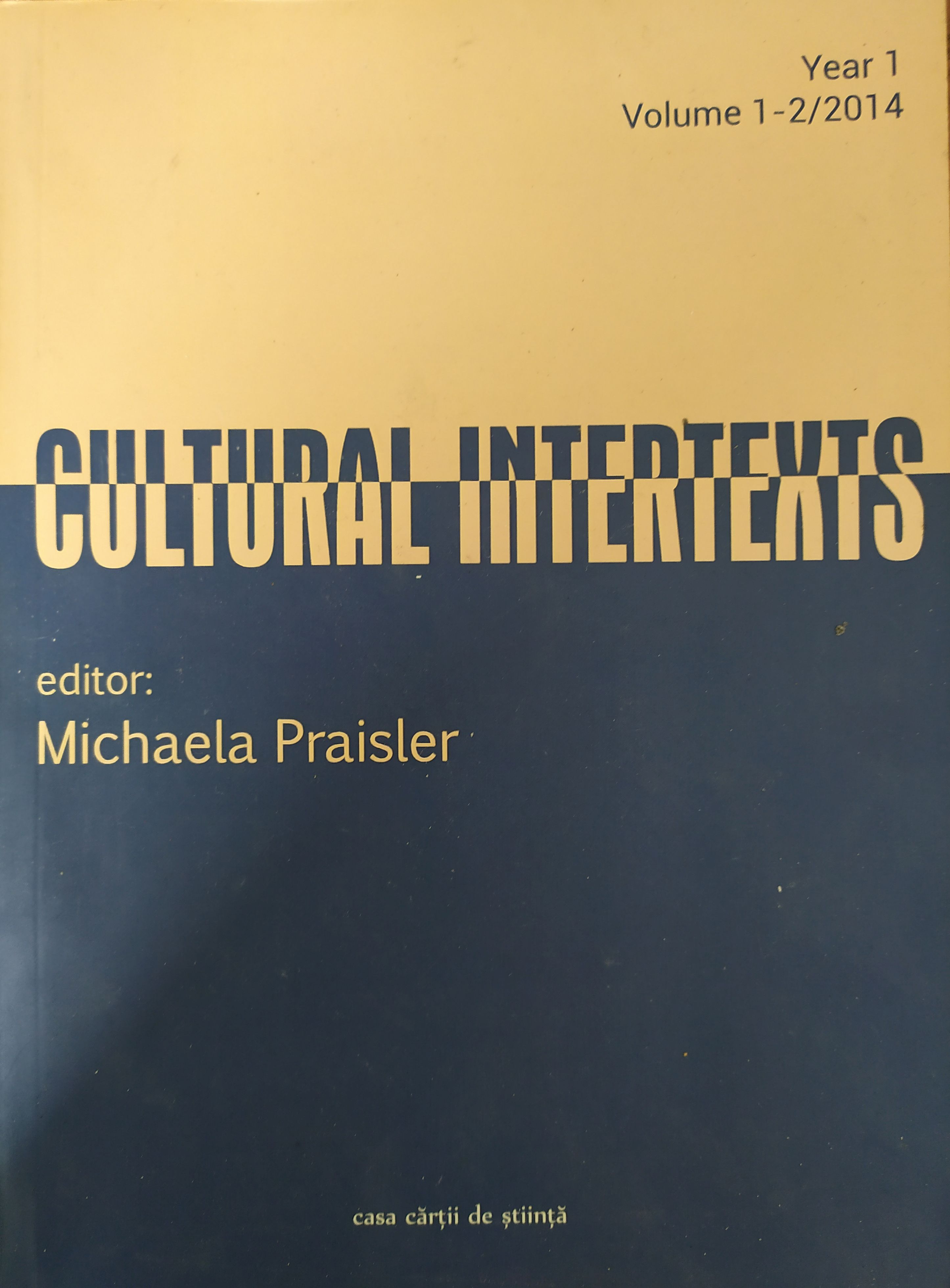
An effect of the interwar cultural modernity, the visibility of the women-writers in the space of Romanian literature was also possible through the assimilation of the patterns of feminine writing, already outlined in Western literatures. French writer Sidonie- Gabrielle Colette influenced the Romanian feminine prose of the interwar period with her meta-feminine writings, freed from prejudice and canons, in which the depth of introspection is combined with the incandescence of sensations. Similar features may be traced in the subjective-lyrical prose that characterizes Hortensia Papadat-Bengescu’s literary debut, which determines a certain stylistic and thematic resemblance between the two congeneric writers, beyond their inherent discontinuities. However, Hortensia Papadat-Bengescu intertextually reveals her dialogue with “the great Colette” only in her last novel, Străina, a work considered lost for a long time, recently recovered and published.
More...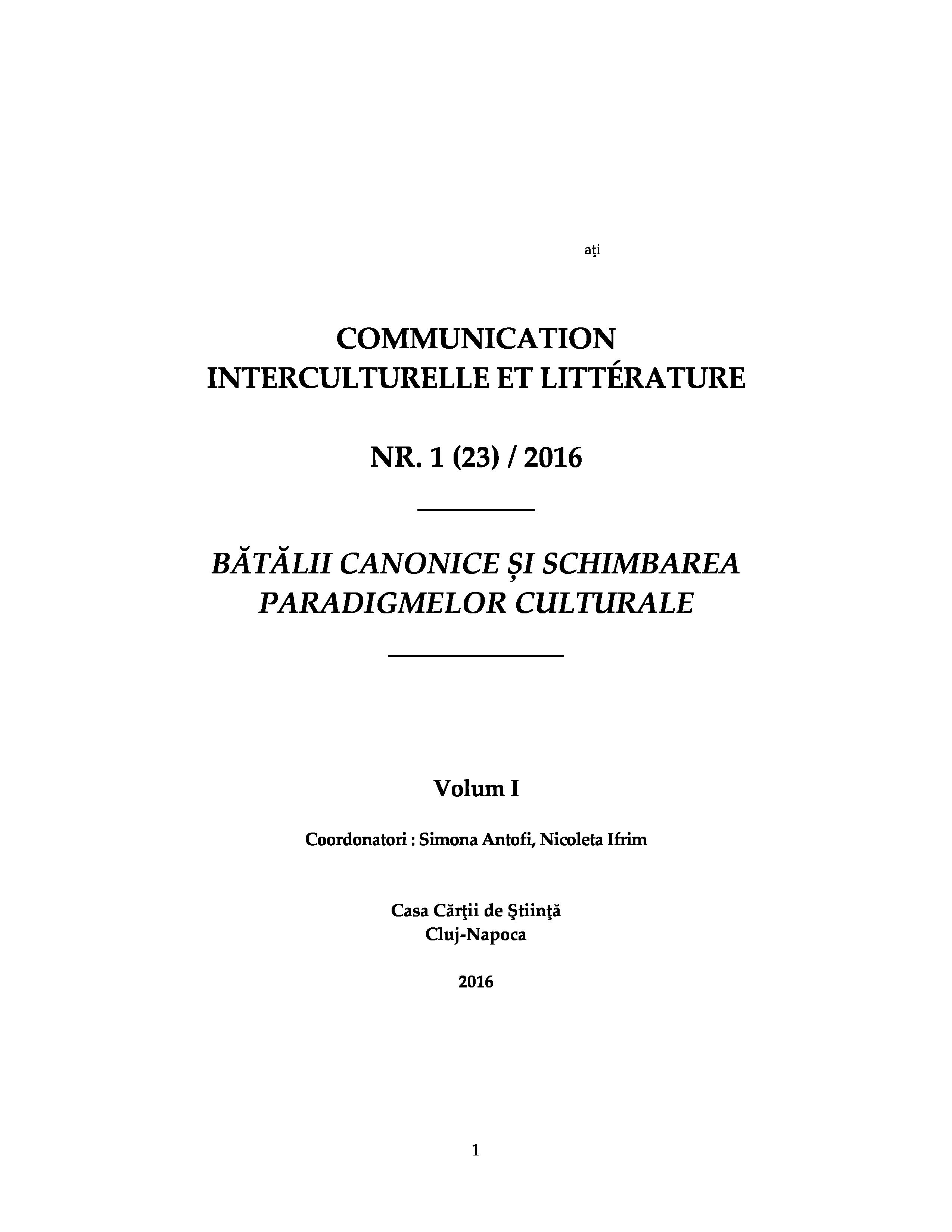
Pendant les années 30 il y avait déjà une crise généralisée de la culture européenne moderne. Cʼest pourquoi Al. Dima propose lʼélaboration théorique dʼun prototype local dont la function culturelle obligatoire soit celle de courroie de transmission. Il sʼagit du concept de localisme créateur qui deviendra une réaction consolatrice par rapport au chaos culturel determiné par lʼimitation sans censure des formes occidentales marquées des idéologies contradictoires. Dans le premier numéro du bulletin édité par le groupement intellectuel Thesis, activant à Sibiu, au cours des années 1932 – 1933, ce sont les communication interdisciplinaires qui dominent, plaidant pour lʼassociation de lʼesthéthique à la biologie, la psychologie, la sociologie, la philosophie, la médecine etc. La formule du localisme créateur fonctionne comme validation de lʼauthenticité de beau roumain en tant que lieu géométrique unissant le typique (le local, le spécifique) et le caractéristique (lʼoriginalité esthétique) – repères dominants dans sa thèse de doctorat intitulée Le concept dʼart populaire (1938). Le spécifique national, hérité du romantisme, a été temporairement résuscité, en tant que nouvelle formule du tradionnalisme, par le groupement intellectuel Thesis de Sibiu. Ce qui particularise lʼidéologie de Thesis est la décantation de lʼélément originaire (natif), formatif (implicite ou explicite) régressif et la révendication du localisme créateur en tant que manifestation dʼun ensemble de traces nationales objectives („Eigenart”) que la nouvelle réalité littéraire des années 30 met énergiquement en évidence. Malheureusement, lʼobéissance à lʼIdée, à la Thèse, présentée de manière légère et souvent contradictoire dans les pages de la revue La Provence Littéraire, de lʼAnthologie THESIS et des deux bulletins édités par le groupement intellectuel Thesis ne sera pas confirmée par/dans lʼécriture littéraire de ses membres, préoccupés surtout par la (ré)traditionnalisation.
More...
Les rapports entre les phénomènes culturaux et le contexte socio économique d’une époque, des instances qui influencent, qui définissent qui déterminent le visage de la littérature nationale, la construction du canon littéraire au fil des temps, sontautant des problèmes agissant sur l'institution des études littéraires. Si le canon littéraire a un double véhicule, celui des promoteurs, conditionnés par les effets économiques, et celui du goût publique, marqué par la dimension ethnique ou par lesmodes du moment, alors on peur parler de la transformation du canon, de sa rélative indépendance.
More...
Victor Papilian’s work represents one of the many key moments of the Romanian literature between the two World Wars. His writings are fundamental for a better understanding and view upon both the social and artistic contexts. This paper aims to offer a wider perspective upon Victor Papilian’s short prose, by establishing two important milestones: the irony and the grotesque. These modern aesthetic categories play an outstanding role in identifying the singularity of the epoch’s mentalities: the modern man, who is always searching, always doubting, always criticizing the world. Our paper aims also to present, from a different point of view, the inner mechanisms which animate a modern writer’s artistic point of view. For this purpose, we have selected several examples of short prose, from Victor Papilian’s work. Our analysis consists in revealing the means by which the irony and the grotesque are built throughout the text. From a fine irony, up to a sarcastic tone, the author uses all kinds of means to illustrate his ideas and feelings. For example, all types of comics and characterization, interior monologue, up to the portraits illustration. Victor Papilian’s short prose, despite the lack of approach, remains one of the key milestones in illustrating the main artistic concepts of its times.
More...
Défini par Mikhail Bakhtine comme „l'interdépendance intrinsèque des relations temporelles et spatiales qui sont artistiquement exprimée dans la littérature”, le chronotope est intimement liée au développement des personnages, imposer leur statut. J’ai décrit et explique les chronotopes dans le roman de Cărtărescu: la rédaction du manuscrit, en regardant la fenêtre, à explorer l'univers intérieur, de la communication, la ville, la compréhension, la construction de l'identité des personnages par le biais de la mémoire et l'histoire du signes, le travail de l'histoire. Dans la littérature postmoderne, le chronotope et l'évolution des personnages sont connectés à la teory des fractales et nous ne sommes pas surpris de constater que tous ces elements sont subordonné à la langue et dépendent de l'interprétation. Les aventures des temps et des espaces sont des constructions linguistiques, qu’il doit être interprétées, pour trouver le sens du texte. Les formes mixtes, l'intégration mutuelle des chronotopes, l'hybridation impliquent une perspective différente sur la vie avec de profondes implications dans la définition de l'individu comme un être dialogique, dont l'existence est un Art de la Fugue.
More...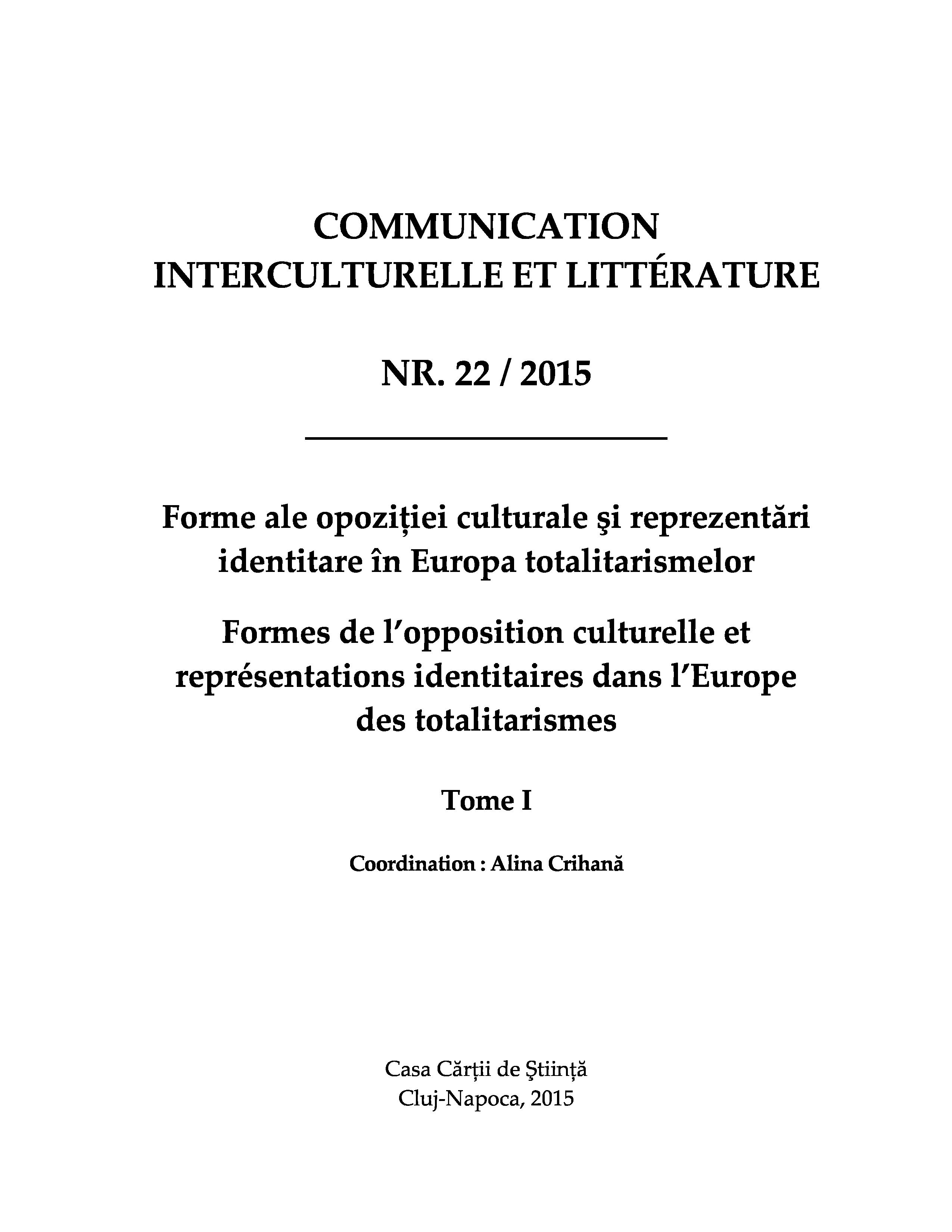
Parmi les écrivains roumains dans l’entre-deux-guerres (Anton Holban, Camil Petrescu et autres) qui ont écrit des chroniques musicales, Mihail Sebastian est le plus actif et le plus substantiel. Entre 1935 et 1939, c’est-à-dire pendant quatre saisons musicales complètes, il rédige pour le quotidien bucarestois de langue française „L’Indépendance roumaine” un nombre considérables de textes sur la musique classique, à savoir des chroniques de concert, chroniques de disque ou chroniques sur les artistes présents en Roumanie. Ses articles s’arrêtent juste avant le début de la Deuxième Guerre Mondiale, mais dans son Journal les notations concernant la musique continuent même jusqu’à la fin de sa vie. Le présent essai désire analyser le lien entre les chroniques musicales (avant la guerre) et les notations du diariste juif (pendant la guerre) sur la musique et les artistes allemands qui jouaient à Bucarest ou ceux que Sebastian écoutait lors des transmissions radio.
More...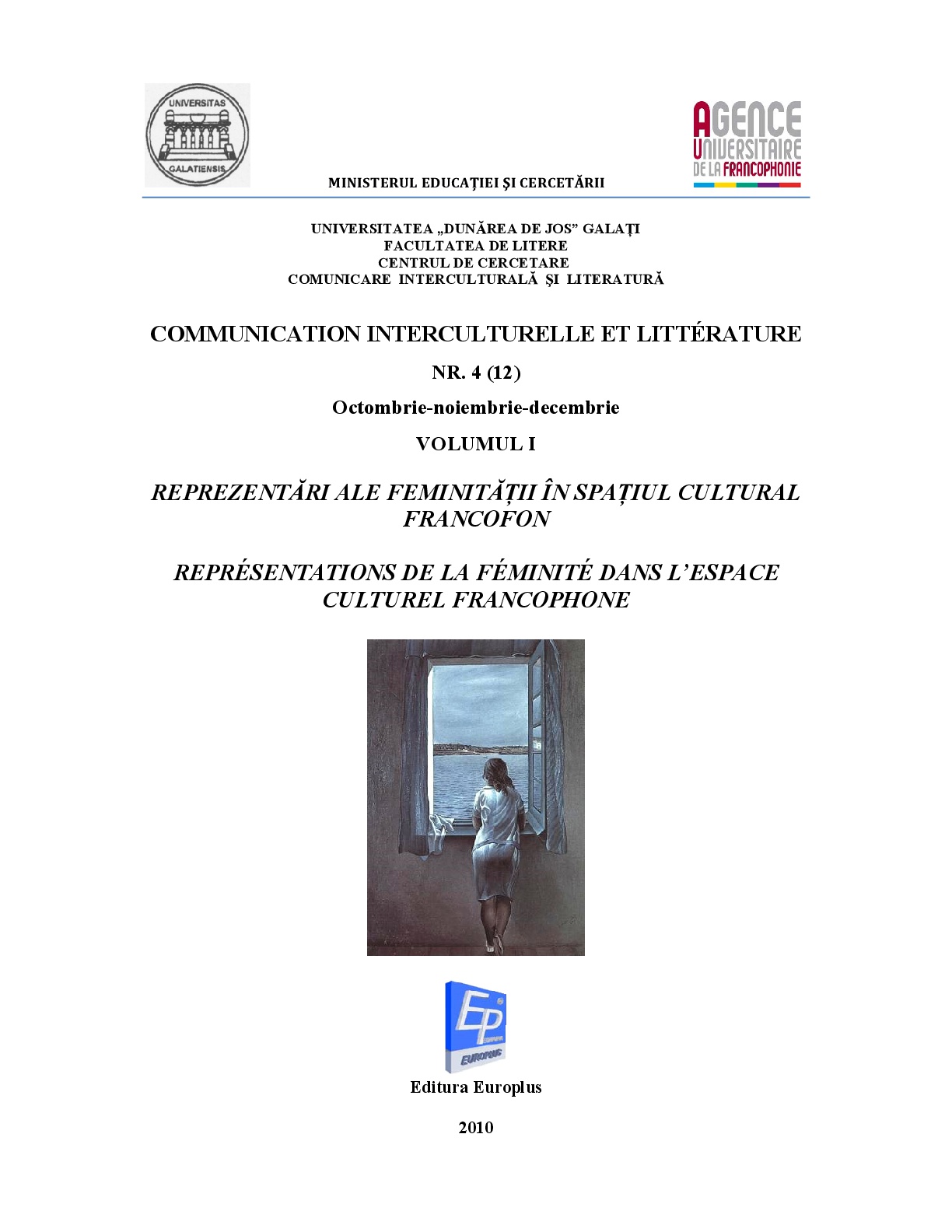
Si les Gender Studies s’inspirent du féminisme, elles sont aussi penchées sur la problématique de l’altérité – coloniale, exotique et autre. En élargissant ce champ de vision au domaine de la littérature francophone et balkanique, j’ai choisi l’œuvre de Cartarescu pour retracer l’histoire de la féminité, de la sexualité et de la rencontre. La rencontre de l’Autre, l’Autre féminin, et du récit qui en découle. Désirant situer l’écriture de l’écrivain francophone roumain dans son intertexte, je vais regarder comment s’inscrivent les modalités du savoir esthétique et érotique contemporain dans le texte de fiction. Celui qui regarde est toujours impliqué dans un rapport dialectique avec l’Autre, vers et à rebours d’une différence qui est à la fois envoûtante et incompréhensible. C’est ce va-et-vient continuel du « Je » masculin par rapport à l’« Autre » féminin dans le récit littéraire de Mircea Cartarescu que je vais analyser, à savoir : l’idée de l’Autre féminin avant la rencontre, le jugement esthétique sur l’Autre, le rapprochement avec l’Autre, l’union avec l’Autre (réelle ou imagée), et le destin final
More...
Ce papier se propose de faire une courte présentation de la personnalité d’un grand roumain, Dimitrie Bolintineanu, connu également comme un écrivain, diplômât et patriote, profondément impliqué dans les mouvements révolutionnaires du milieu de XIXème siècle. Fondateur du roman dans la littérature roumaine, Bolintineanu a été un publiciste passionné, en tant que directeur et éditeur de quelques journaux. Pourtant, l’objet de notre investigation se trouve dans la galerie des personnages féminines qui ornent l’univers du roman Manoil, publié premièrement en feuilleton (dans un seul épisode, malheureusement, à cause de la situation du journal en question) et, puis, un peu plus tard, dans sa forma définitive. L’introduction présente les directions d’investigation de l’œuvre de Bolintineanu et les deux sections suivantes, Dimitrie Bolintineanu in the Romanian culture et Dimitrie Bolintineanu as a novelist donnent des informations sur la position qu’il occupe dans la culture et la littérature roumaine. On présente ensuite les versions des romans sur lesquelles se base cette approche, même si la littérature roumaine possède plusieurs éditions de l’œuvre de Bolintineanu. Finalement, on fait un inventaire des personnages féminins et des techniques de narration utilisées par l’auteur dans la création des portraits respectives.
More...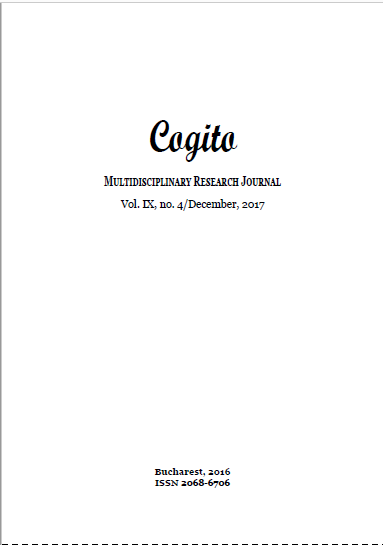
Leader of the generation of young writers and intellectuals in Romania during the interwar period, Mircea Eliade has become to be known worldwide as a theoretician and historian of the religious phenomenon. Brilliantly illustrating the history of religions through fundamental works, Eliade considered that the systematic study of religious ideas from pre-modern and extra-European societies made an important contribution to overcoming European-centered outlooks and building a more adequate image of the relation between specific and universal in culture. Through the progress made in the last century, when communication between cultures expanded, the history of religions facilitated the mutual knowledge of cultures and thus partook in the reconstruction of the ”global universe”, a process highlighting the contributions of all cultures to the heritage of humanity.
More...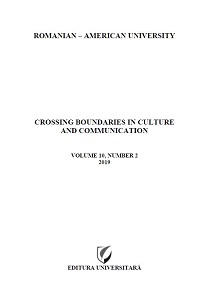
Along the times, literary characters have evolved, experienced diverse changes, either in the structure, or in rapport with the social, artistic, and historical context of the times: if in the antique tragedy the character was idealized, result of a communion of the hero, human being, with a deity, in classicism the character becomes a personality, defined through a constant and dominant characteristic, usually balance, so that later on the fight and spirit of revolt to define an exceptional character faced with exceptional situations, as it happens during the romantic period. But starting from realism, literary characters gain wider importance, from a factual character to a psychological one, as realism aims at probing the inner life of the character, and moreover the psychological metamorphosis, a change that we discover in the new novel, in the modern one, which focuses on the character through the comparison interior-exterior, focusing on the way in which external facts are reflected in the conscientiousness of the character. Female characters who illustrate perennial moral, ethical and aesthetic values, beyond the margins of the cultural and historical times in which they were born, are projected in the Greek epics Iliad and Odyssey, attributed to the legendary Homer. Helen, who falls in love with Paris, Priam’s son, is a landmark of feminine beauty, luring him in a consuming love, even if she is the wife of Menelao. The conflict illustrates a war lasting ten years, caused by this woman, an ideal of feminine beauty, grace and kindness, dedicated exclusively to the object of her passion, sacrificing everything: status, prestige, comfort of a warm monotonous existence, being part of a couple who intensely lives the passion nurtured by itself. As the ontogeny repeats the phylogeny, the same way Romanian literature repeats in its evolution, the evolutionary stages of universal literature, obviously with the peculiarities and the specificity that individualizes it. Romanian literature has developed relatively late, having its roots in the religious writings in general. But, as in the case of universal literature, the feminine character is a main focus for the founders of Romanian literature since the beginnings.
More...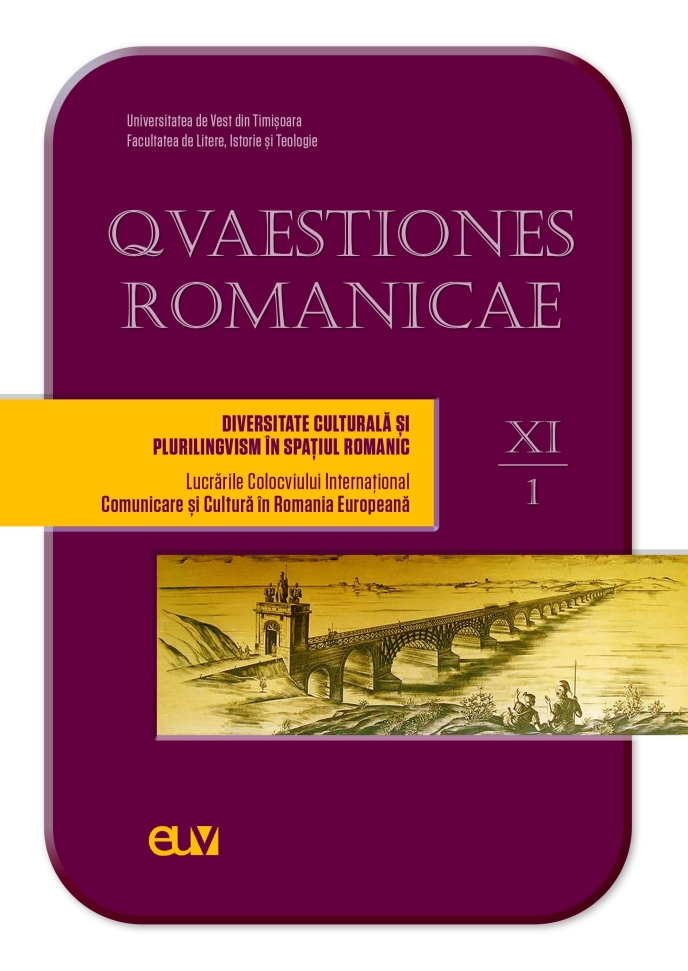
The aim of the present paper is to come to terms with the poetry written by two young Romanian writers, Anastasia Gavrilovici and Daniela Hendea. Basically, it follows a twofold outline: 1. the emergence of plurilingualism and the relation between language and posthuman ethics; 2. the notable poetic features and the force lines that individualize the two poetesses mentioned above. On the one hand, the poems written by Anastasia Gavrilovici explore the hybridization that starts within the body and ends in an integrative conscience, that does not belong to that body anymore. On the other hand, in the poems published by Daniela Hendea, the poetic voice impels the cultural dynamics, questioning not only a literary tradition, but also the profound layers of the individual and social existence.
More...
In countless texts by Pier Vittorio Tondelli, the journey is a central literary motif. Since the literary work of the American author Jack Kerouac exerted a strong fascination on the Italian, the question arises as to what extent the aforementioned motif can be traced back to intertextual references to On the Road. To answer the research question, Tondelli's critical engagement with the beatnik was demonstrated on the one hand. In addition, a section deals with the conception of the travelling motif. In particular, the different ideas that the Italian writer associated with the journey played a central role. Finally, Altri libertini and Camere separate were analyzed about the travel motif. It was shown that both works have intertextual and hypertextual relationships that can clearly be traced back to Jack Kerouac.
More...
Book review: Emilia STAJILA, Miteme orientale în poezia română a secolului XX. Al. Macedonski, Ion Minulescu, Ion Barbu, București, Editura Academiei Române, Colecția „Biblioteca de critică, istorie și teorie literară”, 2023, 222 p.
More...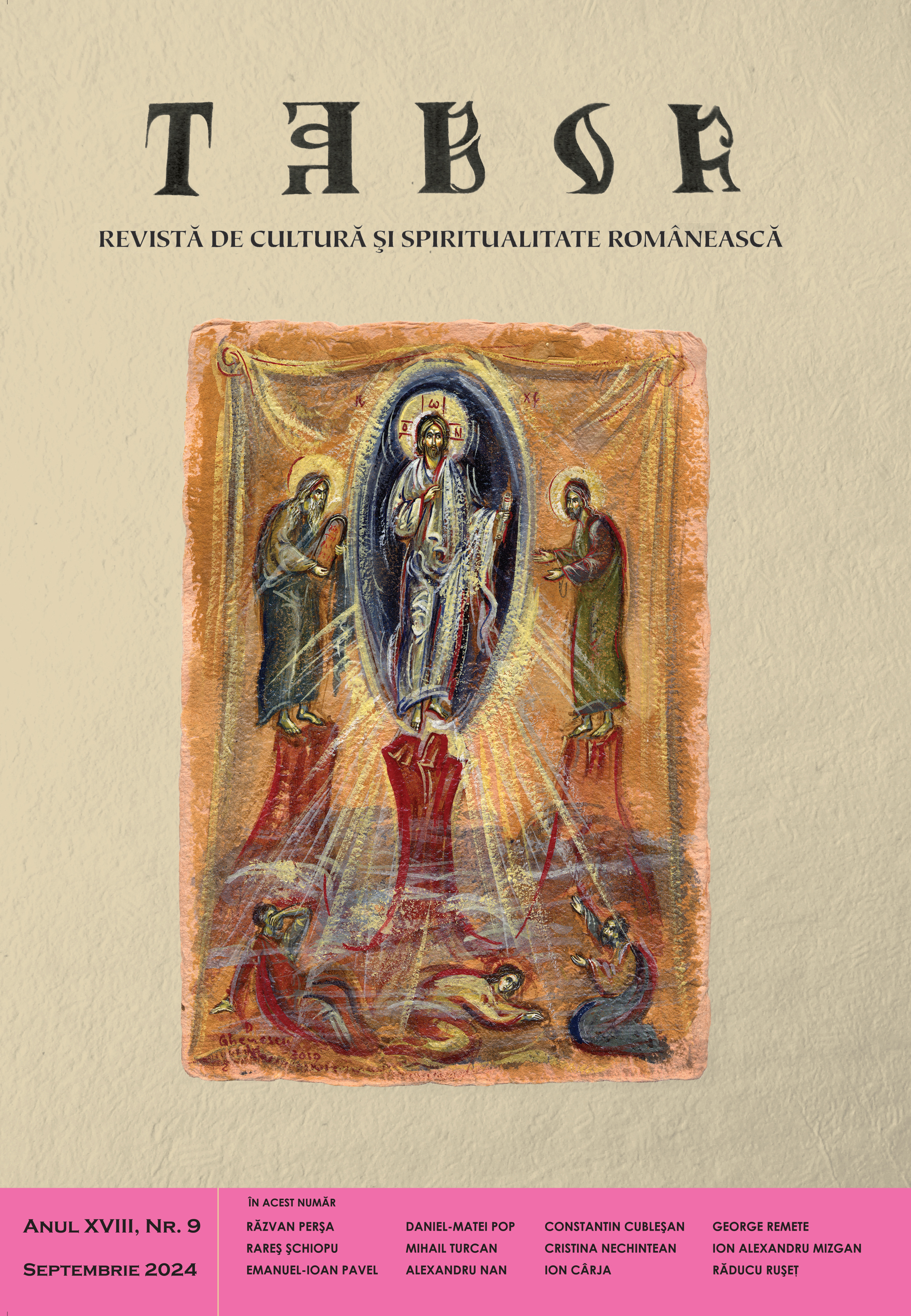
Valeriu Anania organizes his entire work around the concept of anamnesis, with the meaning of not forgetting. Archaic, mythical, Christian or hieros, mythos and logos are interfaces and interstices in a texture where memory is a matrix continuum. Memory is “a kind of sign” between the paradisiacal beginnings and the present. The privileged time of creation is tangent to eternity. Looking for eternity is equivalent to looking for the Hidden, not outside, rising you up, but inside, by descending into the most difficult hell to bear – one’s own interiority. In this sense, Valeriu Anania immerses himself voluptuously in the labyrinth of the Arghesian “troubled” self. The poetic act is invested with the power to stop time.
More...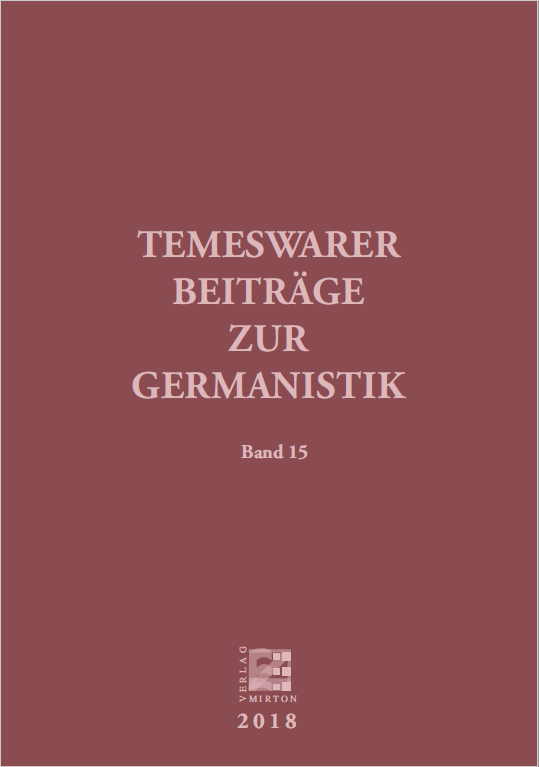
Review of: Blaga, Lucian (2023): Die rumänische Seele. Aus dem Rumänischen übersetzt von von Rainer Schubert, Wien: LIT Verlag, ISBN 978-3-643- 51129-4, 184 Seiten.
More...
The article is a book review of Dana Shishmanian, Vision de Varnava. Înțăleptului Varnava minunată arătare a vederii lui cu pildă tuturor. Ediție și studiu introductiv (MuseIkon studies, 2), Editura Muzeului Național al Unirii, Alba Iulia / Editura Mega, Cluj-Napoca, 2023, 256 pp.
More...